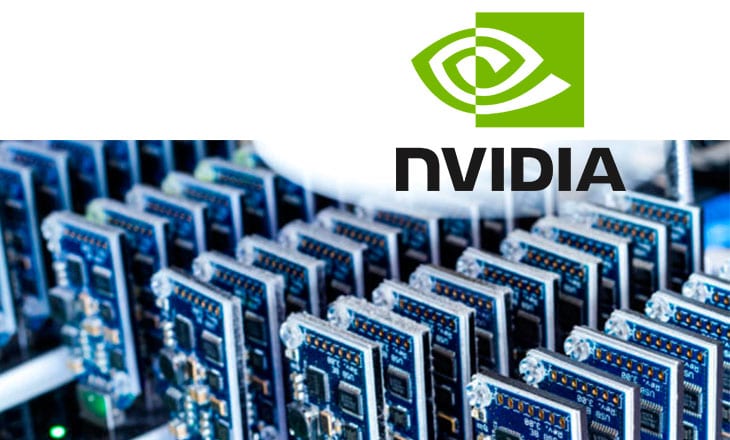Every spokesperson for a publicly traded stock company must, at some point in his or her career, take “fines dancing lessons”, not so much to display fancy footwork when earnings reports are abysmal, but also to set up a situation that could go either way. Nvidia (NASDAQ:NVDA), one of the major chip manufacturers in the world and known for is sophisticated Graphic Processing Units (GPUs), just announced a glowing fourth quarter report, one that beat expectations and caused critics to step back in wonderment.
How about these numbers: Earnings were up 80 cents a share, versus a market expectation of 75, and revenues were $2.21 billion, just a tad over what analysts had set as their target, $2.20 billion. The company did recognize a 24% drop in revenues for the fiscal year, which ended on January 27th, but it had already warned the Street to expect such a drop in sales due to a variety of highly publicized reasons, related to reduced demand In China, heavy declines in crypto mining activities, and resulting backlogs of inventory.
Nvidia had also taken a treacherous step a month ago when it gave an updated forward guidance estimate, an action that the market tends to punish severely. Analysts were suspicious that management was hiding a deep dark secret. One RBC analyst went so far as to say that management might be deliberately understating its crypto related revenues to the tune of $1.35 billion. During 2018, the company’s share gave up 54% of its value, triggering a worrisome class action suit. The stock jumped $10 (8%) on the earnings news, but has since fallen back to $157, the old “sell on the news” strategy.

Jensen Huang Source: Wikipedia
Jensen Huang, Nvidia’s CEO, noted in the firm’s press release:
This was a turbulent close to what had been a great year. The combination of post-crypto excess channel inventory and recent deteriorating end-market conditions drove a disappointing quarter.
Nvidia gained its reputation by revolutionizing GPUs to such an extent that gaming industry and Artificial Intelligence (AI) projects took off. Nvidia is no small enterprise either, sporting 12,000 employees and annual revenues, at least for fiscal 2017, of $10 billion. The firm’s fortunes, however, exploded when crypto mining hit the scene. As you might expect, a sudden unsustainable rise is often followed by a catastrophic drop.
Per one analyst in the space:
When crypto prices — and the resulting crypto craze — reached their peak earlier this year, Nvidia chips were being wiped clean from store shelves as would-be miners invaded on a space once only popular among PC gamers. A steep decline in prices since then, coupled with a potential shift in Ethereum‘s mining rules, and the proliferation of mining-specific computers known as ASICs, has dampened some of Nvidia’s newfound demand for chips.
With bad news following this company along like a dark cloud, industry pundits began anticipating that worse things would surely unfold in the near term, especially once this critical earnings report hit the newswires. Nvidia is not a “big player” in the Nasdaq, but analysts look to it as a bellwether for all thing high tech. Some folks on the Street went so far as to predict dire straights for the Nasdaq, if Nvidia even wobbled a bit off the mark. There had been similar instances in the past, where just such a prediction played out in the market. As it turned out, the Nasdaq went on its merry way, continuing its upward thrust for early 2019.
Not every stock analyst has panned Nvidia, made hay over its crypto mining demise, or knocked its future potential. Analyst Christopher Rolland at Susquehanna Financial Group continues to post a “Buy” rating, based on his view of the wave of AI innovation that will surely come: “We view Nvidia as a pure and levered way to invest in the future prospects of the GPU [graphics processing units] a device we believe is undergoing a renaissance.”
Jensen Huang has also echoed such sentiments, as well:
The foundation of our business is strong and more evident than ever – the accelerated computing model NVIDIA pioneered is the best path forward to serve the world’s insatiable computing needs. The markets we are creating – gaming, design, HPC, AI and autonomous vehicles – are important, growing and will be very large. We have excellent strategic positions in all of them.
